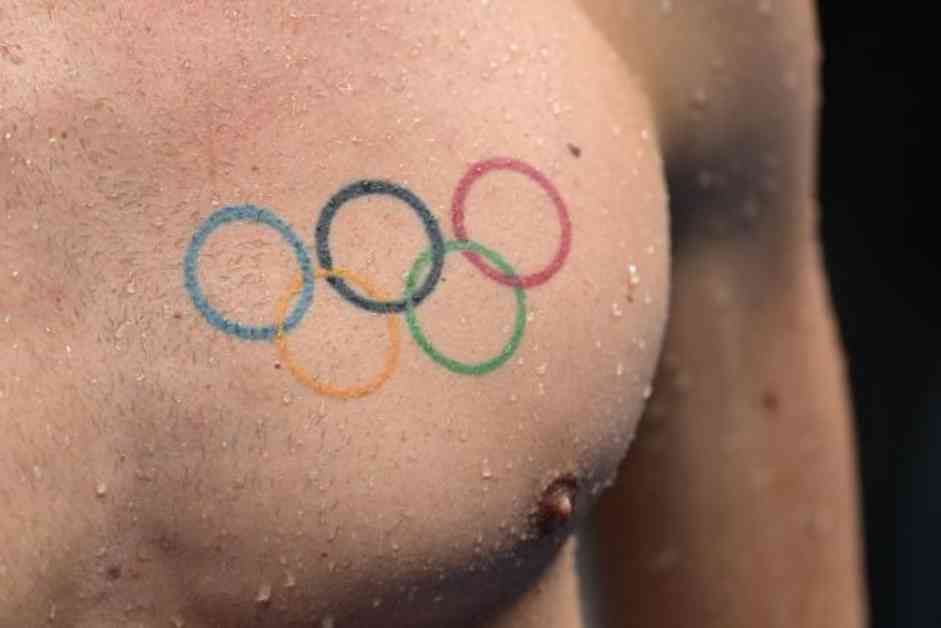Tattoos featuring the iconic Olympic rings have long been a point of contention for Paralympic athletes. Since the 2012 London Olympics, para-athletes have been required to conceal any tattoos of the Olympic rings during the Paralympic Games. This strict rule was enforced by the International Paralympic Committee (IPC) to differentiate the branding of the Paralympic Games from the Olympic Games organized by the International Olympic Committee (IOC). Violating this regulation could result in severe consequences, including disqualification from competition.
However, a recent announcement has brought about a significant shift in this long-standing policy. According to a report by the New York Times, para-athletes competing in the 2024 Paralympic Games will no longer be obligated to hide their Olympic rings tattoos. This decision marks a departure from the previous stringent regulations and signals a more lenient approach by the IPC towards the display of these tattoos.
Craig Spence, the IPC’s head of branding and communications, confirmed this change in policy in an email statement to various media outlets on Friday, August 23. « Athletes with such tattoos are not required to conceal them, » Spence stated, indicating a more inclusive stance towards para-athletes expressing their connection to the Olympic movement through body art.
The significance of this announcement cannot be understated, as it represents a departure from the longstanding prohibition that has been in place since the 2012 London Olympics. The decision to allow para-athletes to proudly display their Olympic rings tattoos is a positive step towards recognizing and celebrating their unique connection to the Olympic values and ideals.
### Upholding Traditions and Embracing Individuality
The debate surrounding the display of Olympic rings tattoos by Paralympic athletes has been a contentious issue for years. While the IOC has maintained strict guidelines on the use of its iconic symbol, the IPC’s decision to relax these restrictions reflects a more nuanced approach to honoring both the Olympic tradition and the individuality of para-athletes.
In the past, para-athletes like Josef Craig have faced repercussions for displaying their Olympic rings tattoos during competitions. Craig’s exclusion from the final of the 100m at the 2016 European Para Swimming Championships in Funchal, Portugal, exemplifies the strict enforcement of the no-tattoo policy by the IPC. The incident sparked a debate on the balance between protecting the integrity of the Paralympic brand and respecting the personal expressions of athletes.
The shift in policy allowing para-athletes to showcase their Olympic rings tattoos signifies a recognition of the unique bond that these athletes share with the Olympic movement. By embracing individuality while upholding traditions, the IPC is sending a message of inclusivity and acceptance within the Paralympic community.
### Respecting Athletes’ Identity and Connection to the Olympic Movement
Tattoos have long been a form of self-expression and personal identity for athletes, serving as symbols of their dedication and passion for their sport. For para-athletes, displaying Olympic rings tattoos is not just a matter of aesthetics but a profound statement of their connection to the ideals of the Olympic movement.
The decision to allow para-athletes to reveal their Olympic rings tattoos at the 2024 Paralympic Games acknowledges the significance of these tattoos as a representation of their shared values with the Olympic Games. By respecting and embracing this aspect of their identity, the IPC is fostering a sense of belonging and pride among para-athletes as they compete on the world stage.
The evolution of this policy reflects a broader shift towards recognizing the diverse backgrounds and experiences of athletes within the Paralympic community. By allowing athletes to express their individuality through their tattoos, the IPC is affirming its commitment to inclusivity and empowerment for all participants in the Paralympic Games.
### Impact on Para-Athletes and the Paralympic Movement
The decision to permit para-athletes to display their Olympic rings tattoos at the 2024 Paralympic Games has been met with widespread support and enthusiasm from athletes and fans alike. This policy change not only acknowledges the personal significance of these tattoos to para-athletes but also symbolizes a shift towards a more inclusive and understanding approach within the Paralympic movement.
For para-athletes who have long felt constrained by the previous regulations on tattoos, this new policy offers a sense of freedom and validation of their identity. By allowing them to showcase their Olympic rings tattoos without fear of repercussions, the IPC is empowering para-athletes to embrace their individuality and celebrate their connection to the Olympic values.
Moreover, this decision has broader implications for the Paralympic movement as a whole. By recognizing and honoring the personal expressions of para-athletes, the IPC is fostering a culture of respect and acceptance within the Paralympic community. This shift towards inclusivity and understanding not only enhances the experience of para-athletes but also strengthens the overall integrity and spirit of the Paralympic Games.
In conclusion, the decision to allow para-athletes to openly display their Olympic rings tattoos at the 2024 Paralympic Games represents a significant milestone in the evolution of the Paralympic movement. By embracing individuality while upholding traditions, the IPC is sending a powerful message of inclusivity and empowerment to all participants. This policy change not only reflects a more nuanced understanding of the personal significance of tattoos but also signifies a broader shift towards creating a more welcoming and accepting environment for para-athletes on the world stage.

